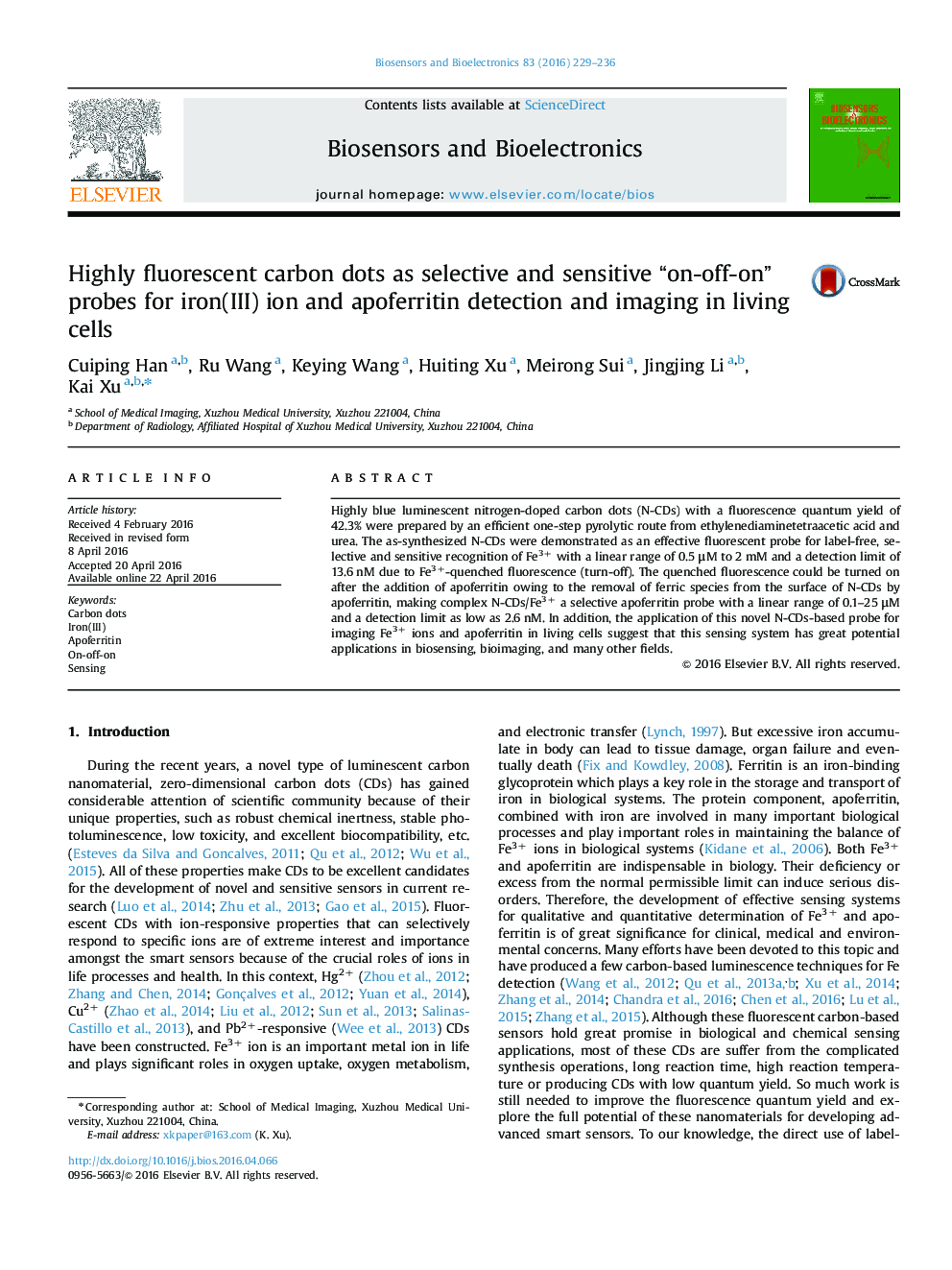| Article ID | Journal | Published Year | Pages | File Type |
|---|---|---|---|---|
| 866225 | Biosensors and Bioelectronics | 2016 | 8 Pages |
•Highly luminescent N-doped carbon dots were prepared by an efficient one-step pyrolytic route.•Sensitive and selective sensing of Fe3+ and apoferritin was achieved.•The mechanism of the Fe3+ and apoferritin sensing was studied.•The probe is applied to fluorescence imaging for cellular Fe3+ and apoferritin successfully.
Highly blue luminescent nitrogen-doped carbon dots (N-CDs) with a fluorescence quantum yield of 42.3% were prepared by an efficient one-step pyrolytic route from ethylenediaminetetraacetic acid and urea. The as-synthesized N-CDs were demonstrated as an effective fluorescent probe for label-free, selective and sensitive recognition of Fe3+ with a linear range of 0.5 μM to 2 mM and a detection limit of 13.6 nM due to Fe3+-quenched fluorescence (turn-off). The quenched fluorescence could be turned on after the addition of apoferritin owing to the removal of ferric species from the surface of N-CDs by apoferritin, making complex N-CDs/Fe3+ a selective apoferritin probe with a linear range of 0.1–25 μM and a detection limit as low as 2.6 nM. In addition, the application of this novel N-CDs-based probe for imaging Fe3+ ions and apoferritin in living cells suggest that this sensing system has great potential applications in biosensing, bioimaging, and many other fields.
